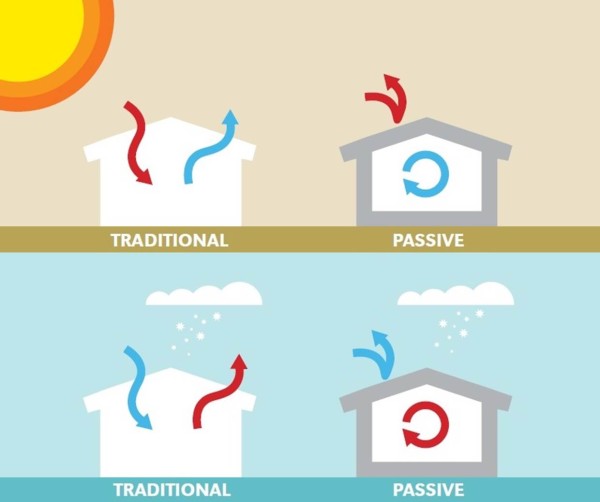These resources are from an archived version of our website. Want to see what we’ve been up to lately? Check out our new website.
Extreme Home Performance with an Airtight Envelope
Extreme home performance may feel like a new concept, but its rapid adoption in the US and abroad means there are increasing opportunities for custom home owners to gain efficiencies and maximize home performance. The truth is, a high-performance home can slash energy consumption by up to 90% over conventional construction.
Clarum is at the forefront of this shift toward high-performance design and construction methodologies. We work with families to leverage Passive House home building practices for extreme performance opportunities in their custom home building projects. And one of the single most effective strategies that we’ve found for boosting the performance of a custom home is to design and build for an airtight envelope.
What’s an Airtight Envelope?
Your home’s building envelope is exactly that – the physical separator between the interior and exterior environments of your house. It serves as the outer shell of your home, and is essential for maintaining the indoor environment and facilitating its climate control.

Based on its functionality, you might assume that all housing envelopes should be airtight. While we definitely agree, the nuances and intricacies of designing for and building a truly airtight envelope should not be underestimated.
To meet the Passive House standard, the air exchange rate – or number of interior air volume changes – of a home’s envelope can be no greater than 0.6 air changes per hour (ACH). Compared to the International Residential Code (IRC) building requirements (which stipulate that a home’s total air leakage must be <5 ACH), the Passive standard is extremely stringent, and fairly difficult to achieve.
Airtightness should not be mistaken for insulation. Both qualities are essential characteristics of a high quality building envelope, but both have to be achieved independently.
What are the benefits?
An airtight envelope has huge effects on the performance of your home, and can change the way other systems throughout the house are needed and operate.
- Increase comfort: A drafty home presents exception challenges to adequate climate control, and fluctuating temperatures can impinge upon your ability to be comfortable in your own home. An airtight envelope helps keep temperature consistent from one room to another, and to control humidity for maximum comfort.
- Save energy: As much as 40% of a home’s heating and cooling loss is due to air leakage. An airtight envelope prevents air leakage, thereby reducing the need for heating and air conditioning (and avoiding the costs that go along with it).
- Avoid damage: There are numerous environmental elements that pose a threat to the integrity of your home. An airtight envelope keeps out rain, groundwater, and wind as well as insects and vermin that can infiltrate and compromise your home’s foundation, walls and roof.
- Promote health: When your home is improperly sealed, indoor air quality can suffer. An airtight envelope presents the proper sealing and condensation control necessary to control moisture and prevent mold, keeping biological contaminants at bay and protecting your health.
How do you get there?
There are a number of methods to employ for sealing the envelope of your new custom home. Building thick walls, incorporating airtight drywall techniques, and carefully detailing housewrap are a few ways builders and designers seal the envelope. Triple-pane windows are often utilized to help eliminate thermal bridging.
Perhaps that most important method for ensuring an airtight envelop is simply taking the necessary steps to plan for this type of advanced construction. If you wait until the framing is complete to think about air sealing, it’s already too late. Fundamental elements must be included in the foundation planning and framing to create a truly airtight envelope for your custom home.
Interested in learning more about Clarum’s approach to extreme performance home envelopes? Give us a call at 650.322.7069








